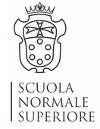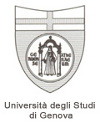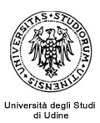
Biblioteca Nazionale Centrale di Firenze
The Biblioteca Nazionale Centrale di Firenze has its origins in the 30.000 volumes of the private Antonio Magliabechi, 1633-1714, an important and passionate man of letters considered in his time a "living library", who spent his whole life collecting and reading books. His only interests were culture and erudition. He remembered perfectly the contents of all his books, which comprised all literatures and languages known at his time, with special attention to Italian topics and interests. In 1714, in his will, he bequeathed his precious collections of manuscripts and printed books to the Florentines -- particularly "to the poor men" in order "to promote studies, virtues and sciences and universal welfare of his dear native country".To increment the growing Library in 1737 it was decided by decree that one copy of all works printed in Florence be deposited there and after 1743 one copy of all publications printed in the entire Grand Duchy of Tuscany. After the death of Grand Duke Gian Gastone de´ Medici and with the end of the Medici dynasty, the library he had established within the Uffizi was improved by the successor Grand Duke of Lorraine and in 1747 it was opened freely to the public for the first time with the name of Magliabechiana, according to Magliabechi´s will .
Grand Duke Francesco of Lorraine showed great interest in the Florentine libraries and added books brought from Luneville Castle to those left by the Palatine Elector (the last Medici heir) in Palazzo Pitti. The Palatine Library was open to the public in 1756. During the following years the Library was enriched by many legacies and gifts and by the acquisition of the collections of the monastic libraries following the dissolution of the religious corporations. The Palatine Library remained in the Pitti Palace until 1816 when it was moved to the building that housed the Public Library of Florence. However, it was kept separate from the Magliabechiana collection. The merging of the two libraries, inspired by Francesco De Sanctis in order to build a National Library, was decided upon in 1861 and assumed the name of National Library and in 1885 of National Central Library of Florence. The combination of these two collections -- so different in their nature (the Palatine born as a dynastic library and the Magliabechiana as the private library of a man of letters) -- produced the most representative library of Italian cultural tradition up to that date. In addition, it resulted in the most important collection from the viewpoint of the outstanding quality of its holdings.
During the 18th century and the first years of the 19th, many important acquisitions and donations of several private libraries were added to the original Medici and Lorraine family collections in the Palatine Library. At the same time the Magliabechiana was enriched with collections from suppressed religious institutes (in 1808) and from the merged Florentine academies. These qualities have continued to the present and since 1870 the National Central Library in Florence has received a sample of any publication printed in Italy.
In its early days the Library had its headquarters in rooms belonging to the Uffizi; in 1935 it moved to the present building, for which work began in 1911 to the design of the architect Cesare Bazzani, and which was afterwards enlarged by the architect V. Mazzei.
The building, one of the rare examples of a library construction, is a part of the monumental area of Santa Croce.
The 1966 Flood (l´Alluvione) caused enormous damage to the BNCF, to the serials collections, the precious collection of Miscellanee, and the precious and antiquarian Magliabechiana and Palatina collections (about 100.000 volumes of those collections were flooded) and many other collections, as well as all card and paper catalogues, to the bibliographical apparatus of the reading rooms and the furnishing. At the time, with the help of many people from all the world, a special restoration Laboratory was created. As an example of the importance of the international help, still today, the restoration file that accompanies each volume is a direct descendant, improved and updated, of a type of filing designed in 1966 by Anthony Cains who after his Florentine experience became director of the restoration department of Trinity College Dublin. A considerable part of the damaged collections has been saved thanks to the work of the Restoration Center, but a consistent part was totally lost.
The Restoration Center of Florence, who still works in an old building near Sant´Ambrogio church is now a center of excellence.
From 1886 to 1957 the BNCF published the "Bollettino delle pubblicazioni italiane ricevute per diritto di stampa", which in 1958 became "Bibliografia Nazionale Italiana" (BNI) (The Italian National Bibliography).
BNCF is also the pilot center for the creation of the National Library System (SBN), whose main aims are the automation of library services and the constitution of a national index of the collections
At the present time, BNCF holds about 6.000.000 printed books, more than 120.000 periodicals of which 15.178 in progress, 4000 incunabula, 25000 manuscripts, 29.120 books from the 1500s , 2.696.327 brochures and about 1.000.000 autographs.
The library shelves cover 135 km and 100 linear meters, with an annual increase of 1 km an 475 meters, so we are always in lack of space and also in lack of funds..















